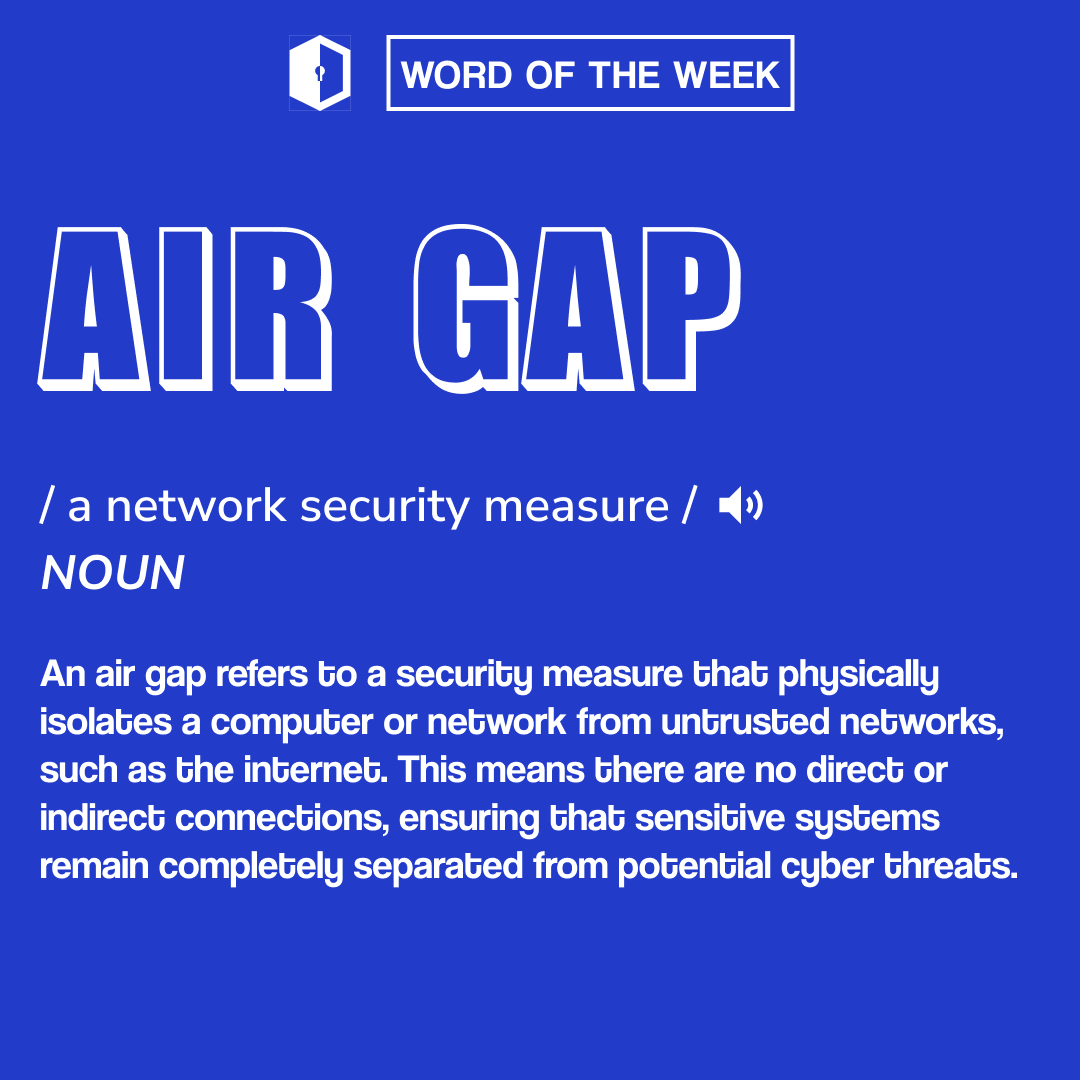✈️ Cyber Security Word of the Week: Air Gap! ✈️
An air gap is a security measure that physically isolates a computer or network from untrusted networks, such as the Internet. There are no direct or indirect connections, ensuring that sensitive systems remain completely separated from potential cyber threats.

A government agency responsible for national security employed AIR GAP techniques to protect its classified systems!!
By isolating these systems, they ensured that even if their public-facing networks were compromised, their most sensitive information remained secure, demonstrating the effectiveness of air gapping in safeguarding critical assets.
🔗 What is an Air Gap?
An air gap is a security measure that physically isolates a computer or network from untrusted networks, such as the internet. This means there are no direct or indirect connections, ensuring that sensitive systems remain completely separated from potential cyber threats.
🚨 Why is an Air Gap Critical?
Air gapping is critical for protecting highly sensitive data and systems. Ensuring no network connections significantly reduces the risk of cyber-attacks, malware infections, and unauthorized access. Air gaps are commonly used in environments where security is paramount, such as military networks, critical infrastructure, and financial institutions.
🛡️ How to Implement an Air Gap?
- Physical Isolation: Ensure that the sensitive systems are physically disconnected from all external networks, including the internet.
- Strict Access Control: Implement stringent access controls and policies to manage who can interact with the air-gapped systems.
- Regular Monitoring: Continuously monitor and audit the air-gapped environment to detect any unauthorized access attempts or anomalies.
- Data Transfer Security: Use secure methods for data transfer, such as encrypted USB drives, and ensure strict protocols for moving data in and out of the air-gapped system.
- Employee Training: Educate employees on the importance of maintaining the integrity of the air gap and the procedures for handling data securely.
Stay tuned for more insights and tips in our Cyber Security Word of the Week series! 🌐🔒
Are you curious to know how we can help your organization stay secure from such attacks and reduce your human risk and attack surface? Contact us!

